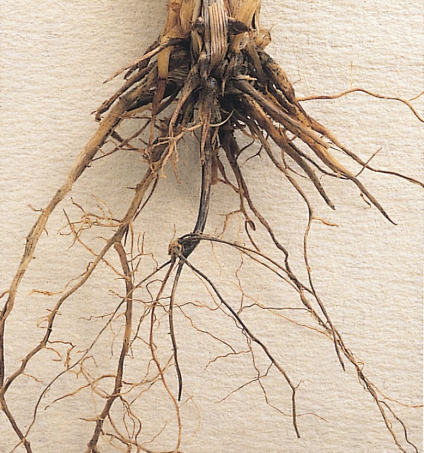This year a few of our regular visitors have commented on the very noisy bird scarer devices in the crops, which some dogs find very frightening.
Why have we introduced such measures into an otherwise peaceful sanctuary of wildlife and beautiful views?!
In this article, our Trustee Bryan Davies explains the reasons for rotating between the different crops on our land, and the unfortunate necessity of this occasional noisy crop.
Thirty years ago this year the Magog Trust purchased the arable farmland of Magog Down and started re-creating chalk grassland and woods for recreation and conservation. However, as visitors to the Down who venture further than North Down will know, a substantial area of land (60 acres) below the sheep pastures has been retained in arable crops – peas and wheat this year. These crops, which are excellently managed by Adam Rayner of David Rayner Farms, provide a reliable yearly income to help pay for part of the cost of running the Down.
Crops grown vary from year to year
Over the years regular visitors to the Down will have seen several different crops being grown and some may wonder what lies behind the choice of crops? Of course variation in market price plays a role in this choice but biological limitations are usually just as, or more important. Autumn-sown wheat (winter wheat) is generally the most profitable crop grown in Eastern England, so why doesn’t Adam grow wheat year after year on the whole area? The reason is that after the first year’s wheat crop the yield of grain falls away due mainly to the root damage caused by “Take-all”, a soil-borne disease which builds up under wheat. Attempts to breed Take-all resistant wheats have failed so Adam always grows a non-cereal crop such as sugar beet, oilseed rape or peas before the wheat. These one-year ‘break’ crops reduce the level of Take-all in the soil, ensuring that the subsequent wheats achieve their potential. Barley is less damaged by Take-all than wheat and so in some years you will see autumn sown barley on the Down and enjoy the waves progressing through the barley as the plants sway in the wind.

Wheat roots blackened by Take-all. Image © 2013 DAFWA.
Neonicotinoid ban affects some crops
For many years sugar beet has been a profitable and reliable break crop for loamy soils like those of Magog Down. However, although Adam still grows beet on the Down, it has become less attractive, partly because of the decline in market price, but also because of the recent ban on the use of neonicotinoid insecticides. This ban has left the crop at risk of attack from an aphid-borne virus potentially causing major reduction in yield of sugar. Similarly, oilseed rape has become a much less reliable break crop because the neonicotinoid ban has greatly increased the risk of crop failure caused by the cabbage stem beetle – readers may have noticed much less yellow in local fields.
Noisy Peas
This year Adam has decided to grow peas as the break crop; it is harvested early giving plenty of time to establish winter wheat at the optimum date and is not affected by the neonicotinoid ban. However, peas require long-term protection from birds, and this is done using gas guns which unfortunately has meant that several dog owners have had to find other places to walk until after harvest. We’re pleased to report that the guns have been successful in keeping the pigeons away with only two small damaged patches near Vestey Wood. Once the guns are de-commissioned at harvest we will notify Friends that it is all-clear again to resume their peaceful walks alongside and around our Arable section.
Bryan Davies
Trustee of the Magog Trust.
UPDATE: the pea crop was harvested and gas guns duly turned off in the first week of August.
